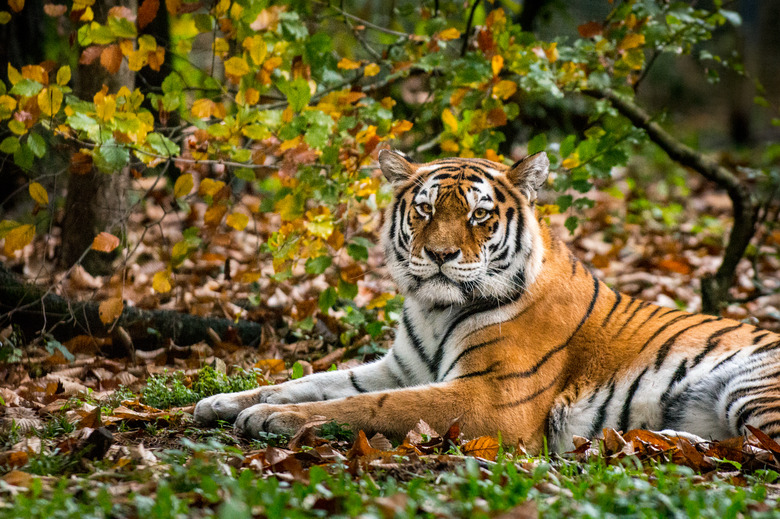First Grade Science Lesson Plans On Animals
It is important for students to learn about different animals from a scientific viewpoint. Discovering how different kinds of animals live, feed, develop, and interact within their environments and other animals will teach students more about their own growth and development, and how we all fit together in a cycle of life.
Animal Teeth
Animal Teeth
Animal teeth come in different shapes and sizes, and serve different purposes. The incisors and canine teeth are used as weapons to kill prey, and premolars and molars are for chewing. The type of food an animal eats classifies the animal as either a carnivore, eating mostly meat, herbivore, eating mostly plants, or an omnivore, eating both plants and animals. Carnivores generally have long sharp teeth, herbivores have wide and flat teeth, and omnivores have teeth of different sizes. Allow students to learn about animal teeth with a hands-on activity. Gather some wooden blocks, peanuts, beef jerky, and staple removers. The staple removers and wooden blocks represent two types of teeth. Have students decide which type of "tooth" would be best suited for eating the peanuts and beef jerky, representing plants and meat. This exercise shows the relation of tooth shape to what food an animal eats.
Animal Classification
Animal Classification
This lesson teaches students that animals are classified into five different groups: mammals, birds, fish, amphibians, and reptiles. After explaining the classification groups, pass out nature and animal magazines such as "National Geographic" and have your students locate different animals within these groups and cut them out. Instruct them to separate these animals into the five different groups. Students can glue their animal groups onto construction paper and share their choices with fellow students.
Animal Life Cycles
Animal Life Cycles
Studying animal life cycles helps students understand how humans grow, as well. Use books or take your students to a zoo to observe animals as they live their daily lives. Observe the differences in age, size, shape, color, mannerisms, and habits of different animals. Bringing a small pet such as gerbil or hamster into the classroom also teached the students first-hand about animal life cycles. Assign students tasks such as feeding and providing water, cleaning the cage, and measuring the animal. Have students keep a journal about the experience.
Sea Animals
Sea Animals
Turning the classroom into an ocean environment will teach students about the creatures of the sea. Ask students to choose their favorite sea animal, and list these favorites on a chart. Give them time to learn everything they can about their animals. Provide them with index cards to write down the facts they find, and ask them to share these findings with the class. Hang blue crepe paper on the classroom walls to represent the ocean, and ask the students to create the animal they've been researching with construction paper, paper plates, crayons, markers, and colored pencils. Arrange these sea creatures on the wall with the crepe paper.
Cite This Article
MLA
Johnston, Kelsi. "First Grade Science Lesson Plans On Animals" sciencing.com, https://www.sciencing.com/first-grade-science-lesson-plans-on-animals-12748008/. 15 November 2019.
APA
Johnston, Kelsi. (2019, November 15). First Grade Science Lesson Plans On Animals. sciencing.com. Retrieved from https://www.sciencing.com/first-grade-science-lesson-plans-on-animals-12748008/
Chicago
Johnston, Kelsi. First Grade Science Lesson Plans On Animals last modified August 30, 2022. https://www.sciencing.com/first-grade-science-lesson-plans-on-animals-12748008/
